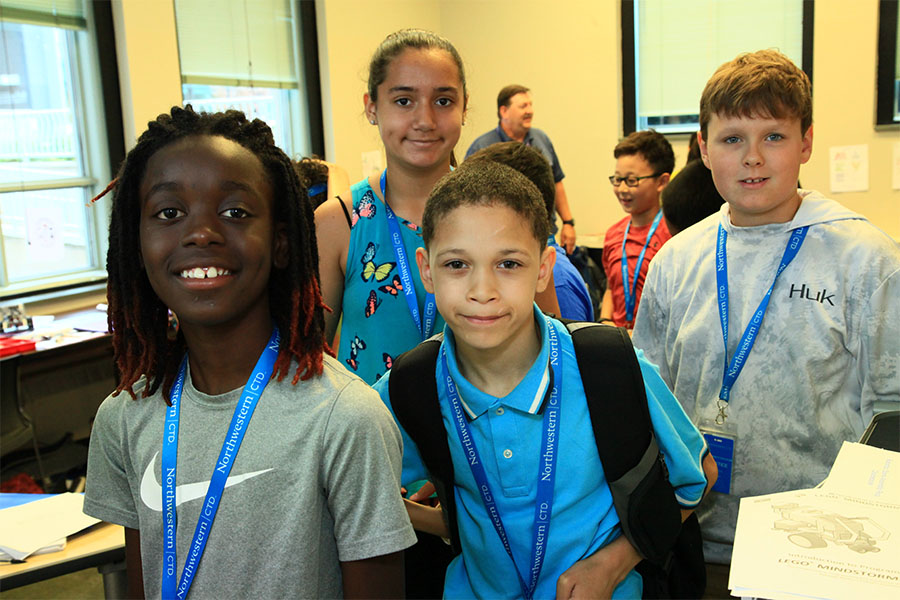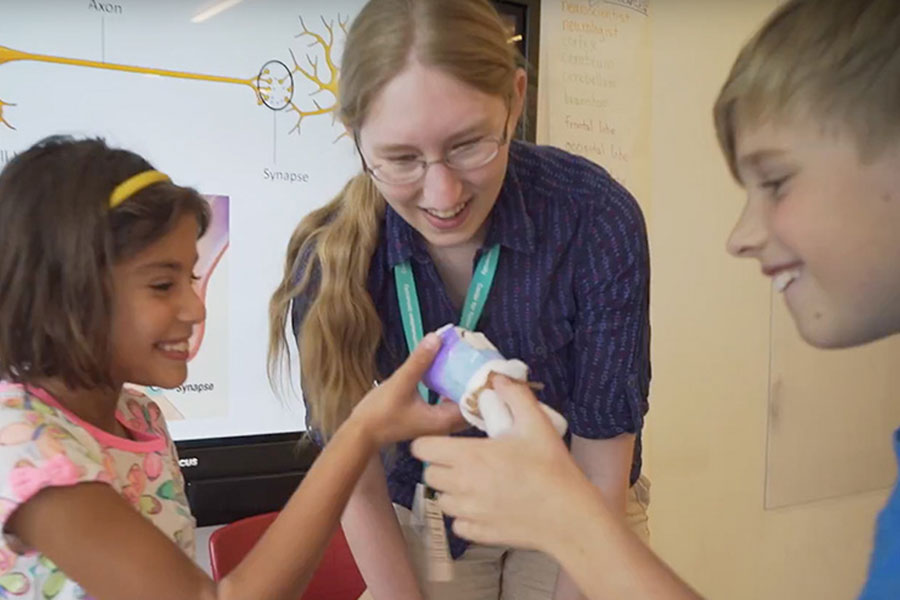
Most parents have had the experience of being completely stymied by a piece of technology only to have a child fiddle with it and solve the problem almost instantly. While this kind of interaction is a little disheartening for grown ups, it is a sign of things to come: today’s kids are well versed in technology. Students are living in a world of tech, which is changing by the minute, and schools are revisiting their uses of technology in all aspects of the curriculum. One area that is getting a lot of attention is coding. Teaching students in early elementary school to write code is not as far-fetched as it may sound. Just like learning a foreign language, young children are often more able to grasp the technical language required to learn coding and see it as fun and exciting. This is especially true of gifted students who readily embrace the complexity and creativity of coding.
More and more coding classes are popping up across the United States. Ali Partovi, founder of
Code.org, views coding as a new imperative to public education and would like to see it become a high school requirement.
[1] Schools in Chicago, New York and California are poised to do just that.
[2] Backed by both Bill Gates and Mark Zuckerberg,
Code.org is training teachers all over the country in computer coding so classes can be offered from early childhood through high school. It is currently being realized that many MBA candidates are struggling to learn coding later in life.
[3] All indicators suggest students should be learning to code as young as kindergarten so they are familiar with the language of computers by the time they reach college and graduate to the workforce.
The language and skills of coding can be introduced to children at a very young age through play, games and conversation. According to Center for Talent Development (CTD) Early Childhood Coordinator
Ann Gadzikowski, “When children play with blocks or Legos they are creating patterns and sequences, similar to lines of computer code. When children learn to jump rope or ride a bike they are developing the tenacity and perseverance necessary to test and re-test a tricky computer program. When children see clouds in the sky and decide to put on their rain boots, they are identifying variables and predicting outcomes, much like a programmer who develops code using ‘if/then’ conditions.” Teaching children to code involves drawing children’s attention to these coding skills that they already practice and then building on this foundation to develop true tech expertise.
For gifted students, coding is enticing because it allows them to create complex structures, predict outcomes and try out their own theories.
This fall, CTD’s Weekend Experience Programs are offering more classes in coding in addition to weaving coding experiences into existing classes.
[1] Barseghian, Tina (May 13, 2014).
“Ali Partovi: Why Learning Code Is Imperative In Public Education.” Mind/Shift.
[2] Ritchtel, Matt (May 10, 2014).
“Reading, Writing, Arithmetic, and Lately, Coding,” New York Times.
[3] Weinberg, Cory (July 11,2014).
“B-Schools Finally Acknowledge: Companies Want MBAs Who Can Code,” Bloomberg Businessweek. Most parents have had the experience of being completely stymied by a piece of technology only to have a child fiddle with it and solve the problem almost instantly. While this kind of interaction is a little disheartening for grown ups, it is a sign of things to come: today’s kids are well versed in technology. Students are living in a world of tech, which is changing by the minute, and schools are revisiting their uses of technology in all aspects of the curriculum. One area that is getting a lot of attention is coding. Teaching students in early elementary school to write code is not as far-fetched as it may sound. Just like learning a foreign language, young children are often more able to grasp the technical language required to learn coding and see it as fun and exciting. This is especially true of gifted students who readily embrace the complexity and creativity of coding.
More and more coding classes are popping up across the United States. Ali Partovi, founder of Code.org, views coding as a new imperative to public education and would like to see it become a high school requirement.[1] Schools in Chicago, New York and California are poised to do just that.[2] Backed by both Bill Gates and Mark Zuckerberg, Code.org is training teachers all over the country in computer coding so classes can be offered from early childhood through high school. It is currently being realized that many MBA candidates are struggling to learn coding later in life.[3] All indicators suggest students should be learning to code as young as kindergarten so they are familiar with the language of computers by the time they reach college and graduate to the workforce.
The language and skills of coding can be introduced to children at a very young age through play, games and conversation. According to Center for Talent Development (CTD) Early Childhood Coordinator Ann Gadzikowski, “When children play with blocks or Legos they are creating patterns and sequences, similar to lines of computer code. When children learn to jump rope or ride a bike they are developing the tenacity and perseverance necessary to test and re-test a tricky computer program. When children see clouds in the sky and decide to put on their rain boots, they are identifying variables and predicting outcomes, much like a programmer who develops code using ‘if/then’ conditions.” Teaching children to code involves drawing children’s attention to these coding skills that they already practice and then building on this foundation to develop true tech expertise.
For gifted students, coding is enticing because it allows them to create complex structures, predict outcomes and try out their own theories.
This fall, CTD’s Weekend Experience Programs are offering more classes in coding in addition to weaving coding experiences into existing classes.
[1] Barseghian, Tina (May 13, 2014). “Ali Partovi: Why Learning Code Is Imperative In Public Education.” Mind/Shift.
[2] Ritchtel, Matt (May 10, 2014). “Reading, Writing, Arithmetic, and Lately, Coding,” New York Times.
[3] Weinberg, Cory (July 11,2014). “B-Schools Finally Acknowledge: Companies Want MBAs Who Can Code,” Bloomberg Businessweek.
Most parents have had the experience of being completely stymied by a piece of technology only to have a child fiddle with it and solve the problem almost instantly. While this kind of interaction is a little disheartening for grown ups, it is a sign of things to come: today’s kids are well versed in technology. Students are living in a world of tech, which is changing by the minute, and schools are revisiting their uses of technology in all aspects of the curriculum. One area that is getting a lot of attention is coding. Teaching students in early elementary school to write code is not as far-fetched as it may sound. Just like learning a foreign language, young children are often more able to grasp the technical language required to learn coding and see it as fun and exciting. This is especially true of gifted students who readily embrace the complexity and creativity of coding.
More and more coding classes are popping up across the United States. Ali Partovi, founder of Code.org, views coding as a new imperative to public education and would like to see it become a high school requirement.[1] Schools in Chicago, New York and California are poised to do just that.[2] Backed by both Bill Gates and Mark Zuckerberg, Code.org is training teachers all over the country in computer coding so classes can be offered from early childhood through high school. It is currently being realized that many MBA candidates are struggling to learn coding later in life.[3] All indicators suggest students should be learning to code as young as kindergarten so they are familiar with the language of computers by the time they reach college and graduate to the workforce.
The language and skills of coding can be introduced to children at a very young age through play, games and conversation. According to Center for Talent Development (CTD) Early Childhood Coordinator Ann Gadzikowski, “When children play with blocks or Legos they are creating patterns and sequences, similar to lines of computer code. When children learn to jump rope or ride a bike they are developing the tenacity and perseverance necessary to test and re-test a tricky computer program. When children see clouds in the sky and decide to put on their rain boots, they are identifying variables and predicting outcomes, much like a programmer who develops code using ‘if/then’ conditions.” Teaching children to code involves drawing children’s attention to these coding skills that they already practice and then building on this foundation to develop true tech expertise.
For gifted students, coding is enticing because it allows them to create complex structures, predict outcomes and try out their own theories.
This fall, CTD’s Weekend Experience Programs are offering more classes in coding in addition to weaving coding experiences into existing classes.
[1] Barseghian, Tina (May 13, 2014). “Ali Partovi: Why Learning Code Is Imperative In Public Education.” Mind/Shift.
[2] Ritchtel, Matt (May 10, 2014). “Reading, Writing, Arithmetic, and Lately, Coding,” New York Times.
[3] Weinberg, Cory (July 11,2014). “B-Schools Finally Acknowledge: Companies Want MBAs Who Can Code,” Bloomberg Businessweek.
